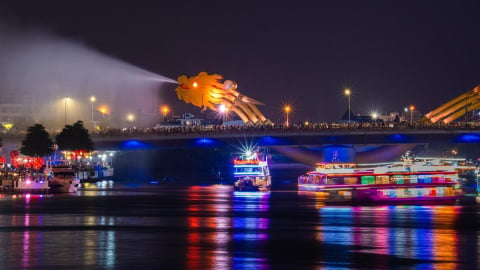Tokyo is one of the busiest cities in the world. But few people know that this famous city is located on a system of construction works.architectureunderground. With great foresight and engineering, the Japanese built a huge underground aqueduct system right near the capital.

Deep beneath the city of Saitama, on the outskirts of Tokyo, lies a giant sewer system. The structure was built to protect the city's 13 million residents from the heavy rains and increasingly severe tropical storms that regularly hit Japan.
The full name of this project is “Metropolitan Area Outer Underground Discharge Channel” but is commonly referred to as G-Cans.

This complex of giant tunnels was built from 1992 to 2006, costing nearly 3 billion USD (about 62,400 billion VND). The project consists of 5 concrete silos with a height of 65m and a diameter of 32m, connected by 6.4km long tunnels.

Next to it is a large water tank measuring 25.4m high, 177m long and 78m wide, called “The Temple”. Supporting this all-important water tank are 59 large pillars connected to 10 high-capacity pumps that can pump up to 200 tons of water into the Edogawa River every second.

The structure itself is a feat of modern engineering. The idea behind the project is actually quite simple: to divert all the stormwater from storms, typhoons, and floods from the surrounding cities and towns, especially Tokyo, into the Edogawa River.
This is aimed at minimizing the damage that floods can cause such as destruction of houses and important buildings.

The giant “Underground Temple” water tank is the most impressive highlight of this area. With its huge and unique size, this massive architectural work has been used as the setting for many different TV dramas.

Floodwater from the city’s water pipes would flow through the tunnel and into the cistern. As the cistern filled, the water would travel through long tunnels to eventually flow into this massive “underground temple.”
From here, four jet-powered turbines will take over and pump water at a rate of 53,000 liters per second out into the Edogawa River.

The benefits of this massive drainage system are a matter of debate for many. There have been questions about the legality of the drainage system as well as doubts about whether it can actually work as well as planned.

Another issue that has been raised is its usability at this point in time when the sole purpose for which this massive structure was built is for “super disasters”.
This leaves many wondering whether the whole project is wise and ahead of its time or just a "tasty morsel" for construction companies.

According to the Tokyo Metropolitan Government Disaster Management Center, if a total of 550mm of rain falls on Tokyo over three consecutive days, causing the Arakawa River to overflow, up to 97 subway stations will be completely submerged.
That’s exactly what G-cans was built to address. However, this scenario is a once-in-200-years event and is extremely rare. So for now, G-cans just exists as a giant, abandoned underground structure.

Whether or not it is truly a “secret weapon”, the G-cans project is still an amazing construction with a strange and unique beauty. That is why it has become an attractive tourist destination.
When not performing their drainage function, these tunnels become a tourist attraction four days a week. Standing 50m underground with the sound of air compressors and water dripping in the distance is truly an interesting experience.


































